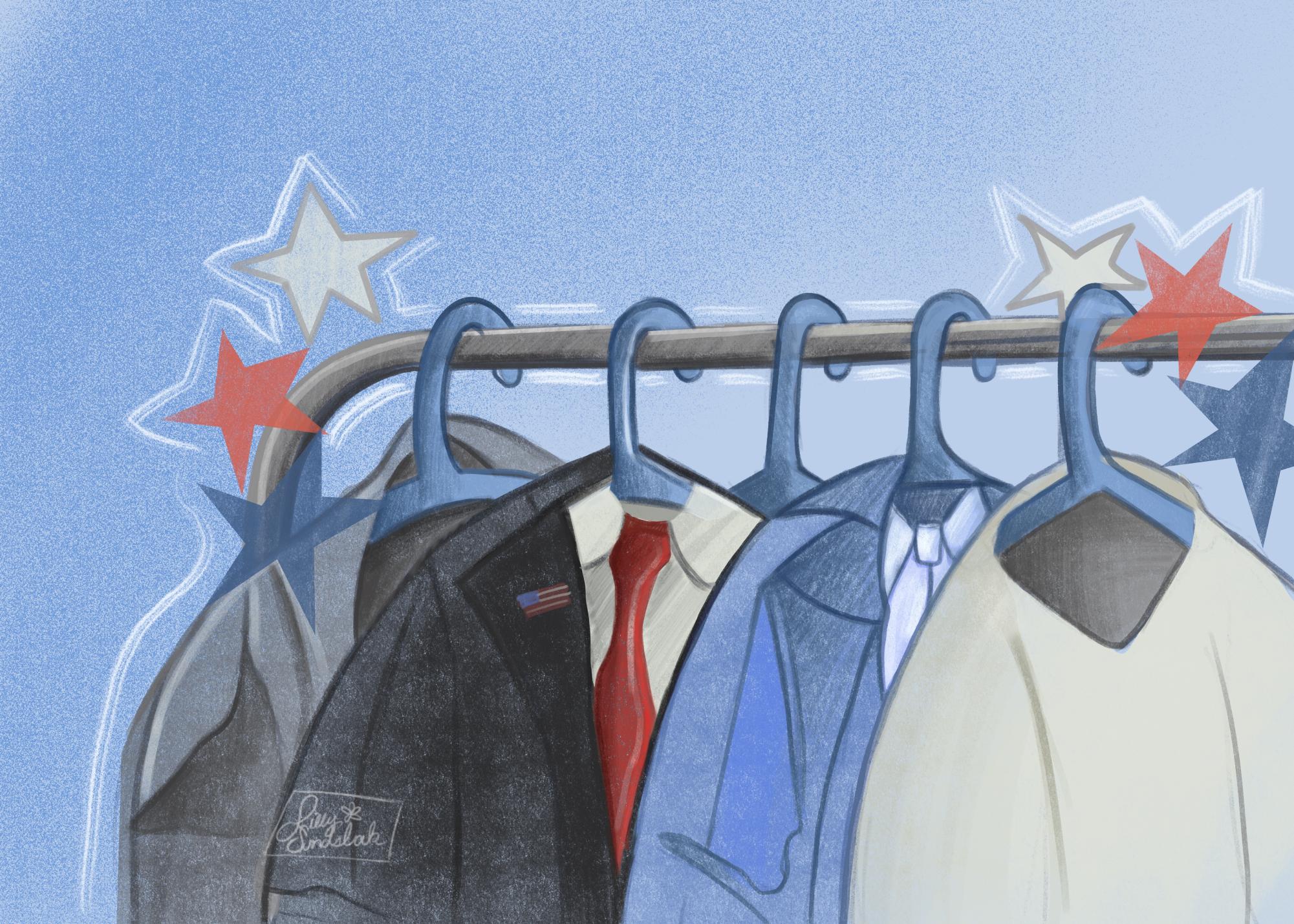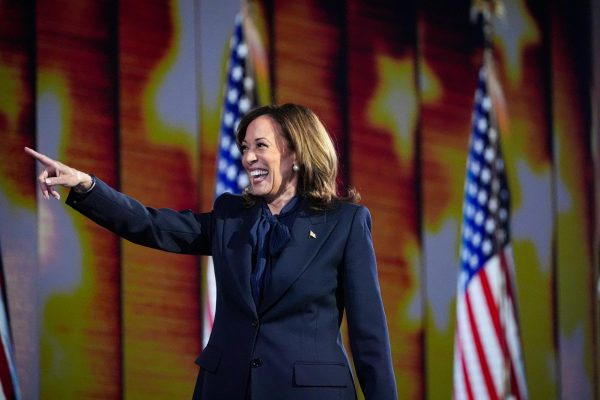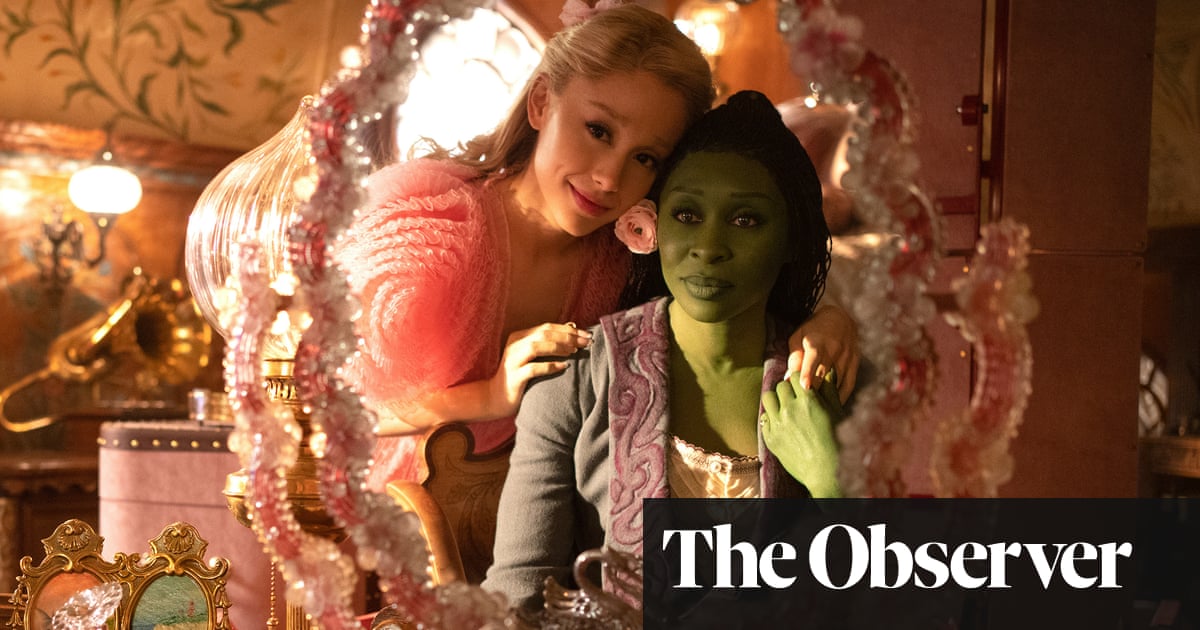Fashion
How fashion shapes political identity in 2024 election

Throughout the presidential campaign, candidates Kamala Harris and Donald Trump have not only been promoting their platforms but also expressing their political identities through their fashion choices.
Across the nation, both Harris and Trump have adopted distinctive styles, incorporating casual attire into their campaigns among the presence of everyday voters.
Trump’s look features a tailored suit, a white button-down and an all-red “Make America Great Again” cap.
In contrast, Harris typically wears a structured blazer with a blouse and Chuck Taylor sneakers in place of Manolo Blahniks.
A 2021 study published in the National Library of Medicine found that the way a political candidate dressed affected the evaluation of their personality characteristics, demonstrating the influential role that clothing plays in visual political communication.
Assistant professor in the School of Fashion Melissa Gamble agrees that fashion has the power of nonverbal communication in politics.
“It’s communicating your identity, it’s communicating even an idea or an affiliation, whether you’re aligning yourself with a particular group or a particular belief,” Gamble said.
In a similar regard, Alpha Kappa Alpha alumni Monday Milledge, a member of the same sorority as Harris, said she believes in the political power of fashion.
“I do think that it’s important in politics, because it’s a part of how you show up,” Milledge, who attended the Chicago Fashion Week event “A Celebration of Chicago Style,” said. “First impressions come across as how you take care of yourself, and one of the first things people see is you’re judged by how well you’re groomed.”
During their one and only debate in September, both Harris and Trump’s typical clothing styles were on full display.
Harris wore a black pantsuit, one of many seen throughout her political campaign, a white shirt with a knotted neck scarf, pearl accessories, a flag lapel pin and her 3-inch heels.

Harris’ signature style has become a staple in the minds of some voters.
“When I think of Kamala Harris, I think of her iconic power suit that she’s been wearing throughout the campaign trail,” Haven Hathaway, a senior fashion studies major said. “I think just women in power suits is a huge fashion statement, and especially because women empowerment is a huge talk of this election.”
Likewise, Yvonne Glover, who also attended “A Celebration of Chicago Style,” has noticed a growing challenge for the increasing number of women in the political space.
“We see them having to really figure out that challenge of how do they bring their femininity, if they want to, or whatever it is about them that they want to say, because we as women tend to use fashion to come into a room or a boardroom,” Glover said.
Summer Anne Lee, an adjunct instructor at the Fashion Institute of Technology in New York and fashion historian, said Harris’ pantsuits offer a touch of femininity in a mainly masculine sphere. Lee is working on an American presidential fashion research project.
“While she does tend to wear more subdued colors, neutrals like the tans and browns and gray and dark blue, there are definitely moments where she brings out some of those more feminine colors, like a light purple or a light blue, or even sometimes a pink, which those are more colors that we don’t see in menswear,” Lee said while referring to her notes.
On the other side of the stage, Trump stood true to his usual uniform: a blue navy suit, white shirt and a red tie a few extra inches long with a flag lapel pin.
To fashion lover Shawn Scott, director of talent acquisition at Vi, Trump’s American flag color scheme is purposeful.
“If you come out too high-end that can turn off a lot of people,” Scott said. “I think that’s why Donald Trump wears very basic colors, styles. Now, granted, it may be very expensive, but you wouldn’t know that by looking at it.”
Gamble also said she believes Trump’s use of the American flag is an attempt to further resonate with his party and voters.
“He’s trying to communicate and, kind of in voters’ minds, cause them to affiliate Donald Trump with America, the American flag, patriotism and those kinds of things,” Gamble said.
While the length and build of Trump’s suits have been discussed in public media, Lee, the fashion historian in New York, said his suit structure may also be an attempt to communicate his political and businessman persona.
“To wear his clothing so big can be leaning into the idea of power, of masculinity, like ‘I’m going to take up as much space as possible,’” Lee said.
Even though the politicians represent two different political parties, Lee said their end objective is quite similar even when casually dressed to greet masses on campaign trails.
“Especially when they’re on the campaign trail, they’re very intentionally having to try to dress in ways that’s going to appeal to voters,” Lee said. “That’s where we get the famous like, roll up the sleeves kind of look, or candidates like to wear a cowboy hat when they go to Texas, because they’re trying so hard to relate.”
Although clothing choices of political figures can convey messages about their identities, fashion in the political sphere is often viewed as a frivolous matter, said Lee.
“Fashion is historically considered something very feminine that people don’t really take the time to analyze as much or also preserve and document and record what presidents wear,” Lee said. Within her studies, she said she has found it interesting that there were archives dedicated to first lady fashion, but hardly any to presidents themselves.
This lack of perceived importance of fashion plays into larger American societal gender constructs, even beyond politics.
“I think that’s really the history of women’s dress versus men’s dress, generally speaking,” Gamble said. “Even outside of the political theater, so to speak, women have had a lot more options in what has been considered acceptable dress than men, whether it’s material or it’s style or it’s color.”
While some of the public are against repeated outfits, recurrent use of colors, silhouettes and patterns can help shape a candidate’s public persona and signal their political party allegiance.
Jacqueline Heath, an associate designer at Design Collective by Cintas, said she has seen repeated styles that enforce traditionalism as a factor of political fashion.
“I feel like, what we traditionally see is something that’s pretty conservative in terms of cut and silhouette in comparison to those that are fashion forward,” Heath said.
While political fashion may be traditionally associated with menswear, fashion may play a new role in this election due to the potential of a first female president. As a female president is unprecedented, there is curiosity about how her presence will be visually represented in the office and what that might mean for political attire and style.
“It would be so life changing to actually have there be such a thing as presidential women’s wear and for a pair of pearl earrings and a pair of high-heel stilettos to be presidential for the first time in history,” Lee said.
Copy edited by Doreen Abril Albuerne-Rodriguez
Resumen en Espanol
En Estados Unidos, tanto Harris como Trump usan estilos distintivos, incorporando atuendos informales en sus campañas en medio de la presencia de votantes comunes.
El look de Trump presenta un traje sastre, una camisa blanca abotonada y una gorra roja con la leyenda “Make America Great Again” (Hagamos a Estados Unidos grande otra vez).
Harris suele llevar un blazer estructurado con una blusa de Chuck Taylor y zapatillas de deporte en lugar de las de Manolo Blahnik.
Un estudio de 2021 publicado en la Biblioteca Nacional de Medicina encontró que la forma en que un candidato político se vestía afectaba la evaluación de sus características de personalidad, demostrando el papel influyente que juega la ropa en la comunicación política visual.
A pesar de que los políticos representan a dos partidos políticos diferentes, Lee dijo que su objetivo final es bastante similar, incluso cuando se visten de manera informal para saludar a las masas en las campañas electorales.
“Especialmente cuando están en la campaña electoral, tienen que tratar de vestirse de manera muy intencional para atraer a los votantes,” dijo Lee. “Ahí es donde tenemos el famoso estilo de ‘me arremangamos’, o a los candidatos les gusta usar un sombrero de vaquero cuando van a Texas, porque se esfuerzan mucho por relacionarse.”
Spanish digest by Araceli Ramirez



:max_bytes(150000):strip_icc()/112224-Italian-Women-SOC-2ba7f334385f425eb3457165b6172638.jpg)






